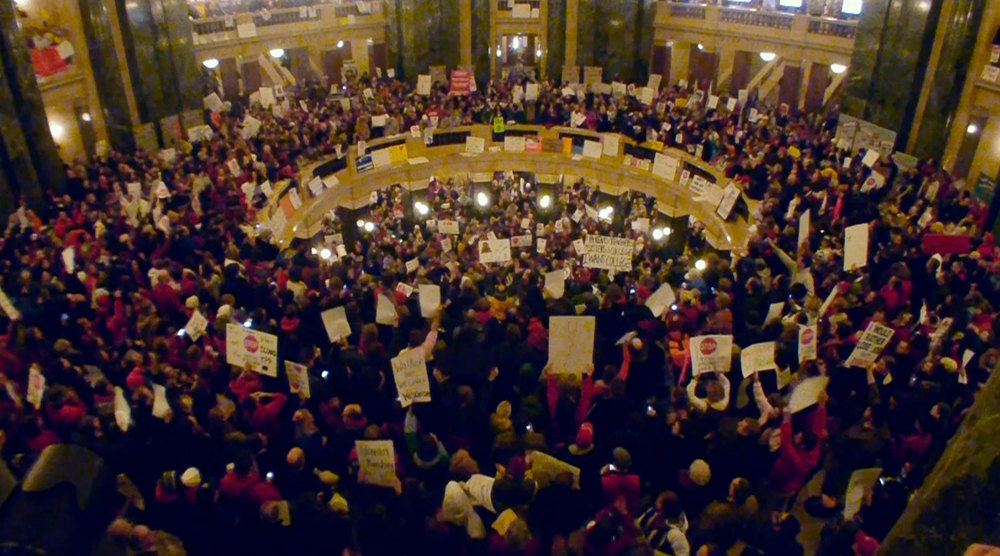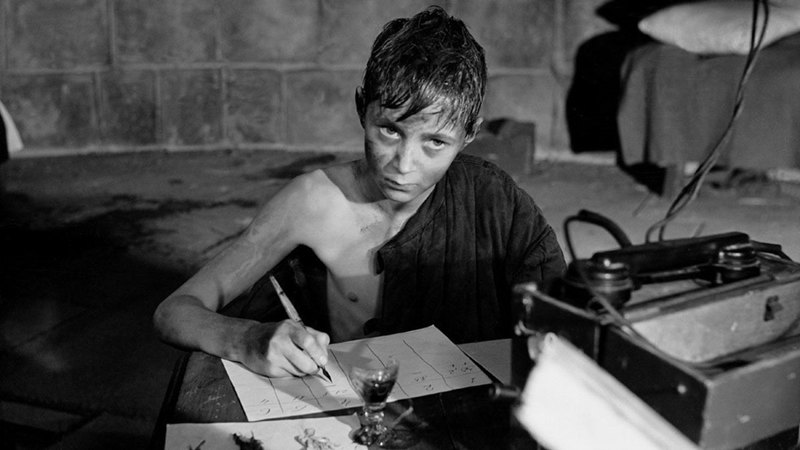One of the best cops-and-robbers crime dramas ever made gets even better in this excellent Blu-ray high-definition transfer. Thank heaven (and Warner Bros.) for small favors.
The centerpiece of “Heat” is a raging gun battle outside a city bank between L.A. Police Lieutenant Vincent Hanna (Al Pacino) and his army of cops and mastermind criminal Neil McCauley (Robert De Niro) and his gang of thieves. It’s one of the scenes viewers remember most, but action and adventure are not the only elements in this harrowing, nearly three-hour crime saga. Of equal importance and getting equal attention are the personal lives of the two adversaries and their relationship with one another. It is a lengthy, violent, yet reflective film that perhaps bites off a little more than it can chew. Still, it’s an effective thriller that provides intimate portraits of its cops and robbers. By casting two of Hollywood’s best actors in the starring roles, writer-director Michael Mann (“Manhunter,” “Thief,” “The Last of the Mohicans”) almost pulls it off.
The first character we meet is Hanna, the policeman. He’s having another bad day. His wife (Diane Venora) is about to leave him, his stepdaughter (Natalie Portman) is having a breakdown, and somebody has just pulled off an armed robbery with multiple murders on his beat. Hanna is a guy whose job is his life. He’s tough, restless, jumpy, relentless, and more than a little over the edge. To emphasize these attributes, Pacino’s performance is more than a little over the top, too. He spends a good deal of his time shouting at people. We’re never sure if his character is so moody he’s overreacting to every situation, or if Pacino himself is just overacting. In either event, it works fine, making Hanna a more complex fellow than most cops in these kinds of dramas.
McCauley, on the hand, is cool, calm, and calculating as the super crook who pulls off big-scale heists. De Niro’s performance is deliberately understated to set off Pacino’s high-strung behavior. McCauley is single; in his occupation attachments are a hazard. As he is fond of saying, “Allow nothing in your life that you cannot walk out on in thirty seconds flat if you spot the heat around the corner.” But he, too, finds his existence cold, without personal bonds. He meets a young woman in a library, a graphic designer named Eady (Amy Brenneman), with whom he falls in love. She almost makes him forget his favorite dictum.
The third major character in the film is Chris Shiherlis (Val Kilmer), a friend, accomplice, and protégé of McCauley. Like Hanna, Chris is having marital problems directly related to his work. Chris’s wife (Ashley Judd) understands him better than Hanna’s wife understands her husband, but it’s of small consolation. Good or bad, the men in this story place their business ahead of their family or their private affairs. McCauley and Shiherlis’s job are to rob stuff. Hanna’s job is to stop them. They are men obsessed.
In spite of having two high-profile stars in the same movie, Mann puts Pacino and De Niro together in only a couple of scenes. Their most notable is a brief conversation they have in a coffee shop in which they reveal how much alike their characters really are. Both men have killed, but neither man is a killer. Dedicated and smart, both men have chosen dangerous, unpopular, and consuming lines of work. Both men are doing their job. When they part, one can sense they have a grudging respect and maybe even admiration for one another.
The fact is, we tend to root for both men, the good guy and the bad guy, since we can see the conflicting emotions in each of them. These fellows don’t know anything else to do nor want to do anything else.
As much as I liked the little scene between Pacino and De Niro, it is the film’s action sequences that stand out. The previously mentioned bank holdup is a good example. It’s a long, brutal, drawn-out ordeal filled with constant tumult and danger. The camera never stops moving and the excitement never flags for an instant. Other tension-filled scenes take place in the lot of an abandoned drive-in theater, in a precious metals depository, and at an airport hotel.
Drawbacks? Sure. The movie is brilliant, but it’s too damned long. There’s no reason for a three-hour character study. This is not “Godfather II” or “Gone With the Wind.” Mann allows the quieter, transitional scenes to go on too long and lingers on too many peripheral details with minor characters, permitting the film to expand about a half an hour or more beyond what could have been a tighter story.
Yet as I’ve said, the movie has its own rewards, which not only include the many Los Angeles location shots but actors Tom Sizemore, Jon Voight, William Fitchner, Wes Studi, Ted Levine, Tom Noonan, Hank Azario, Jeremy Piven, and Bud Cort in minor or supporting roles. And who couldn’t like a film with Danny Trejo in it?
Video:
When I first reviewed this film years ago, I didn’t care all that much for the movie’s standard-definition picture quality, finding its variations from rich and vibrant to dull, veiled, and washed out taxing on the eyes. But this new Blu-ray edition is an entirely different matter. Using a dual-layer BD50 and a 1080p, VC-1 encode, WB’s video engineers, under director Michael Mann’s supervision, produces a new high-definition transfer that one can hardly fault. This is all the more remarkable considering that Mann shot the film largely on location under what appears to be natural lighting conditions, using a color palette running heavy to iron grays.
The only shortcoming of the PQ? The image can sometimes look quite soft. But it’s a minor weakness, with most of the film looking crisp and sharp. Blacks are deep, and whites glisten. Nighttime shots admit good inner detail, and daylight shots are bright and clear. The screen, retaining the movie’s original 2.40:1 aspect ratio, displays an inherent film grain yet remains generally free of noise or age markings.
Audio:
The audio, available in either lossless Dolby TrueHD 5.1 or regular lossy Dolby Digital 5.1, is better than ever in the lossless mode. Right from the opening scene, we hear the sounds of a locomotive rumbling into a station, showing off the audio’s frequency response, deep bass, and impact. The soundtrack uses the surround channels especially well during the action sequences for gunshots, explosions, helicopters, breaking glass, falling shells, that kind of thing, while also using the surrounds effectively in quieter scenes of crowds, restaurants, with musical ambience, too.
The TrueHD adds a firmness, a solidity, and a smoothness lacking in the Dolby Digital. The audio’s only shortcoming? The dynamic range is so wide, you might find yourself turning the volume up and down throughout the movie. Either that, or watch this film when you’re sure you’re not going to disturb anybody.
Extras:
Warners have carried over the extras from their previous special-edition DVD set, and again they are in standard definition. First up is an audio commentary by writer-producer-director Michael Mann. After that is a segment on the making of the film that contains three featurettes: “True Crime,” fourteen minutes, recalls the real-life people who served as inspirations for the characters in the movie; “Crime Stories,” twenty minutes, chronicles the movie’s twenty-year history before getting the go ahead to make; and “Into the Fire,” twenty-four minutes, tells us more about shooting the film in L.A. Following these featurettes we find two more: “Pacino and De Niro: The Conversation,” ten minutes, provides background on the famous restaurant scene between the two actors; and “Return to the Scene of the Crime,” twelve minutes, revisits the L.A. locations for the filming. Finally, we get eleven deleted scenes totaling a little over nine minutes.
The extras conclude with fifty-two scene selections; three theatrical trailers; English, French, Spanish, German, and Portuguese spoken languages; French, Spanish, Danish, Dutch, Finnish, Norwegian, Portuguese, and Swedish subtitles; and English and German captions for the hearing impaired.
Parting Thoughts:
I have always wondered if Pacino and De Niro flipped a coin before the movie began shooting to see which of them would play which part? It could easily have gone either way. But as both of them contend during the course of the film, “You don’t want to know.” It’s a good film made better in high def. That’s all we need to know.


